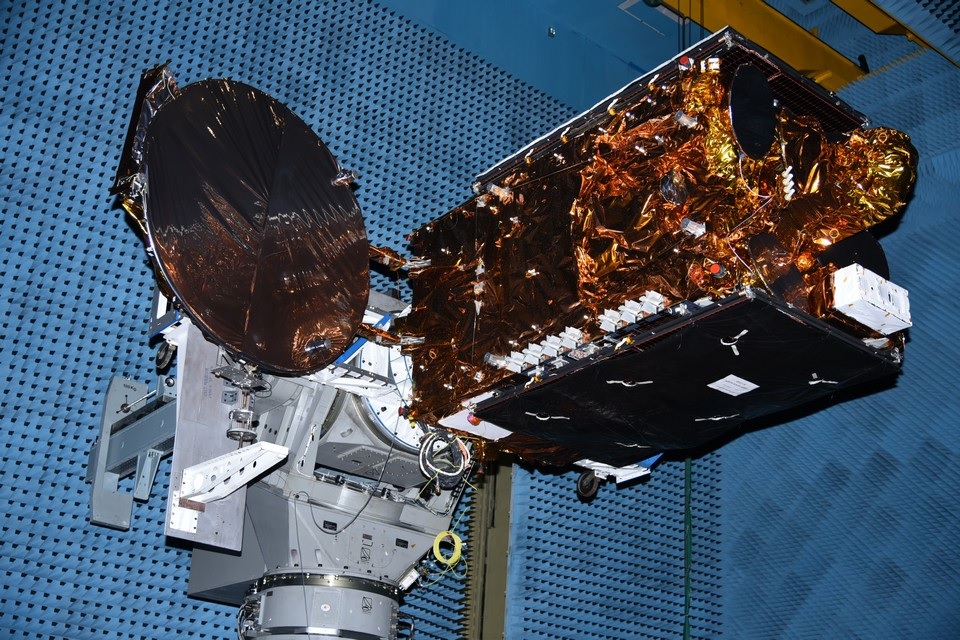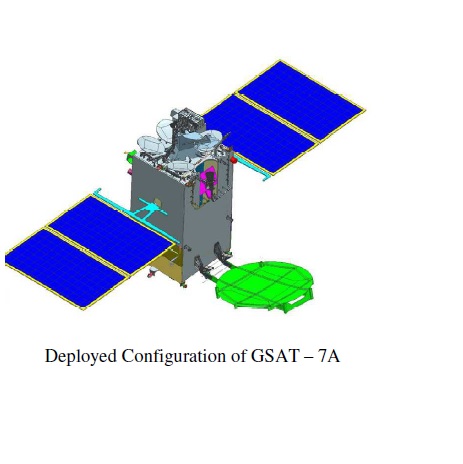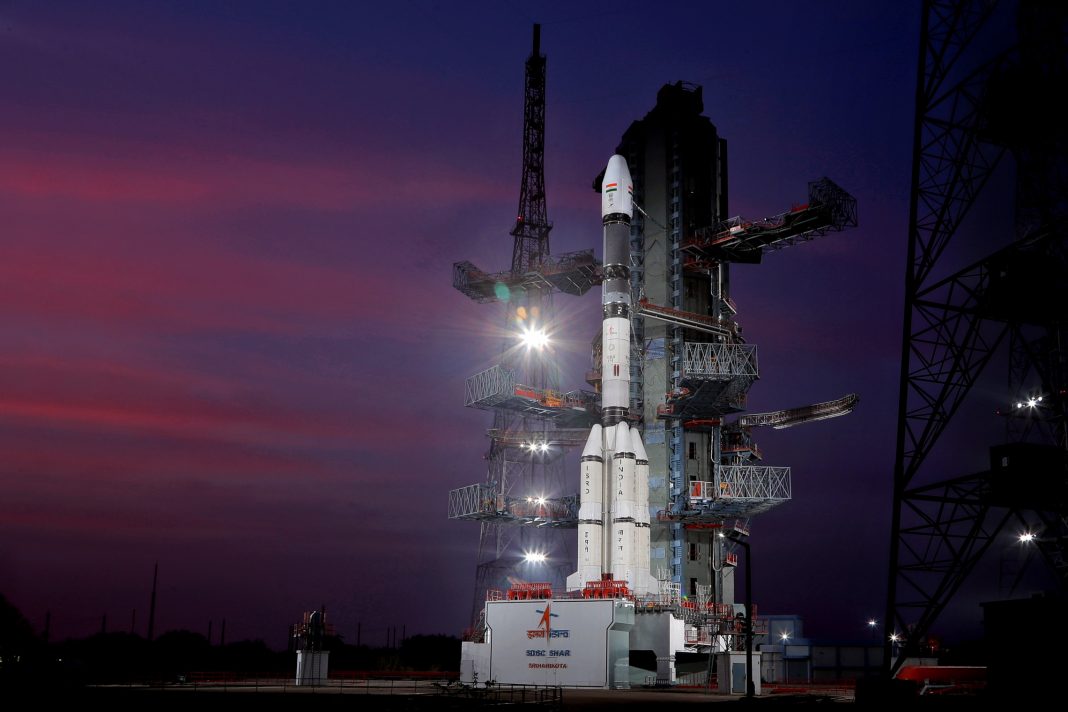Earlier today, an Indian Space Research Organization (ISRO) Geosynchronous Satellite Launch Vehicle-F11 (GSLV-F11) successfully put into a Geonsynchronous Transfer Orbit (GTO), the Indian Air Force’s (IAF’s) first ever dedicated communications satellite called GSAT-7A. While orbit raising manoeuvres will begin tomorrow, the launch nonetheless heralds a new era of drone operations for the IAF which currently relies on ground-based very high frequency (VHF) links to control the same. GSAT-7A will greatly improve the range and flexibility of the IAF’s UAV fleet and provide the necessary bandwidth for armed UAV flights.

Image: GSAT-7A undergoing tests. Source: ISRO
Indeed, it was reported in 2016 that the IAF has been working to arm legacy unmanned aerial vehicles (UAVs) in its fleet under ‘Project Cheetah’. This particular project, which was reportedly being pursued in collaboration with Israeli Aerospace Industries (IAI) entails the upgradation of the IAF’s existing pool of Israeli-origin Searcher II and Heron UAVs with new sensors and compatible precision guided munitions (PGMs) for engaging terrorist targets on India’s periphery. Project Cheetah has apparently since been enlarged to include the acquisition of some 10 Heron-TP armed UAVs from Israel for $400 million. Incidentally, the Defence Research & Development Organization (DRDO) has also carried out several flight trials of a weaponised version of the Lakshya remotely piloted air vehicle and apparently achieved an accuracy of 20 m circular error probable.
Be that as it may, any armed drones in the IAF’s arsenal can only operate over extended ranges when command & control (C2) for the same is facilitated by dedicated high-bandwidth military communication satellites, usually with transponders in the Ku-band. Ku-band is preferred since it provides wider beam coverage than other bands and suffers relatively less attenuation in adverse meteorological conditions (less ‘rain fade’ for instance). GSAT-7A, of course, operates in the Ku-band and will be used to control the IAF’s armed drones which will feature a Ku-band transmitter data link.
GSAT-7A, with its four steerable antennas for regional coverage and a gregorian antenna with ten transponders for narrow beam coverage across the Indian region (as per ISRO), will appreciably reduce the current reliance of the IAF’s ground control stations (GCS) on short distance VHF links. This means that Indian armed UAV operations need not necessarily take place close to only Indian airspace in the years ahead. GSAT-7A’s wide coverage footprint will also increase basing options for the IAF’s armed drones. Of course, for very high tempo operations more such communications satellites will be required. Which is probably why a GSAT-7C for the IAF is also in the works.
With an expected life of eight years, GSAT-7A will also serve to improve the IAF’s overall Command, Control, Communications, Computer, Intelligence, Surveillance, and Reconnaissance (C4ISR) capabilities by improving connectivity between ground installations, mobile radars and airborne assets. GSAT-7A will tie-in with the AFNET which provides the backbone for the Integrated Air Command & Control System (IACCS) used by the IAF to manage network-enabled operations.

Source: ISRO
In terms of its features, GSAT-7A has ISRO’s standard I-2K bus whose capabilities have been ‘fully exploited with respect to accommodation, power generation and thermal management’, according to ISRO. Weighing 2250 kilogrammes (kg), GSAT-7A has a 440 Newton (N) liquid apogee motor and 650 kg of on board fuel, not just to achieve its designated initial geosynchronous orbit, but also for on orbit attitude correction operations. Naturally, as a military satellite, ISRO has built in ‘sufficient redundancy’ for continued operations. Its four solar panels provide about 3.3 kilowatts of power.
As such, GSAT-7A completes the picture for regional armed drone operations, since a high accuracy satellite based augmentation system (SBAS) in the form of the domestically developed GAGAN which is certified for both en-route navigation as well as precision vertical guidance for assisting planes to land safely is already available. Domestic industry in India has also developed lightweight GAGAN receiver modules fit for potential use on board armed UAVs. Such a receiver will be able to receive ‘refined’ signals from the American GPS, Russian GLONASS and the Indian Regional Navigation Satellite System thereby improving waypoint navigation for Indian UAVs and enabling them to both ‘get back home’ in the event of a link failure with their GCS as well as make emergency landings on alternate airfields. Obviously, the last two capabilities assume great importance when a UAV is armed. Higher quality SATNAV signals also improve precision strike capabilities. Clearly, with GSAT-7A, the stage is set for the IAF to conduct credible armed drone operations in India’s neighbourhood.
Saurav Jha is the Editor-in-Chief of Delhi Defence Review. Follow him on twitter @SJha1618
© Delhi Defence Review. Reproducing this content in full without permission is prohibited.
































